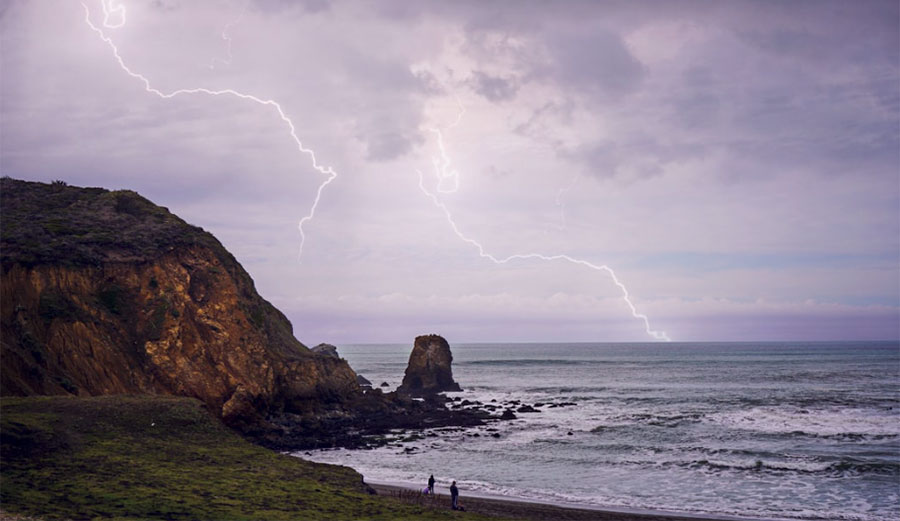
Lightning strikes on the horizon in Pacifica, CA. Photo: Sergio Casillas//Unsplash
Lighting is a powerful thing. Enormous bolts of electricity raining down from the heavens, moving so fast they literally tear the air around them. Ear-splitting claps of thunder accompany a reaching, deadly finger of God that’s hotter than the surface of the sun. As Paris Hilton said, “that’s hot.” It’s all very biblical. But if you see lightning while surfing, is it really dangerous? Of course it is. It’s lightning. Get off the beach and get inside.
Despite the rarity of actually getting struck by lightning, it can happen. Infrequently, but it can. Recently, an Olympic-hopeful and surfer named Katherine Diaz Hernandez was killed by lightning while surfing on a beach in El Salvador. Back in 2014, a surfer was killed and 12 others were injured when lightning hit near the Venice Beach Pier. Surfing during a storm can be exciting, but it is definitely not recommended.
So what, exactly, is lightning? Well, you might very well be aware, but for those who aren’t, let’s break it down a bit. In short, it’s electricity. With a peak current intensity anywhere from 10 to 100-million volts of electricity, the average bolt carries about 30,000 amps.
“In effect, positive charges and negative charges collect in different parts of a cloud — no one really knows exactly how,” Meteorologist Al Peterlin explains. “When enough charges collect, there is a bolt of lightning as the electricity travels between areas of opposite charge. Lightning can flow between clouds or from the cloud to the ground. The lightning jumps through the air, heating the air and making it expand. The air then quickly contracts again as it cools. This movement of air makes the sound wave called thunder.”
Given all that, it should be obvious that, if you’re surfing and you see lightning, it’s time to get out of the water. But often, especially in those wonderfully tropical places with thick, warm air redolent with the sharp tang of ozone from the sea and flowers on land, a thunder storm on the horizon is just something to marvel at in between waves.
Contrary to popular belief, when lightning strikes a body of water, scientists don’t believe the charge goes all that far down. Otherwise, after a lightning storm, piles of dead fish would appear. Instead, it hits the surface and fans out, discharging its energy horizontally. Since salt water conducts electricity better than fresh water, a lightning strike in the ocean goes a little farther. The actual size of the spread, however, varies so widely it’s kind of pointless to put a number on it.
Lightning also hits the ocean far less frequently than it hits land — but if your boat or your body are the only things sticking out of the sea for a long ways, well… the chances go up.
Long story short: if you’re outside and lightning is nearby, you should play it safe and get inside a building or even a car. Don’t hang out under a palm tree or anything tall. Just get out of the water, get off the beach, and live to surf another day.

